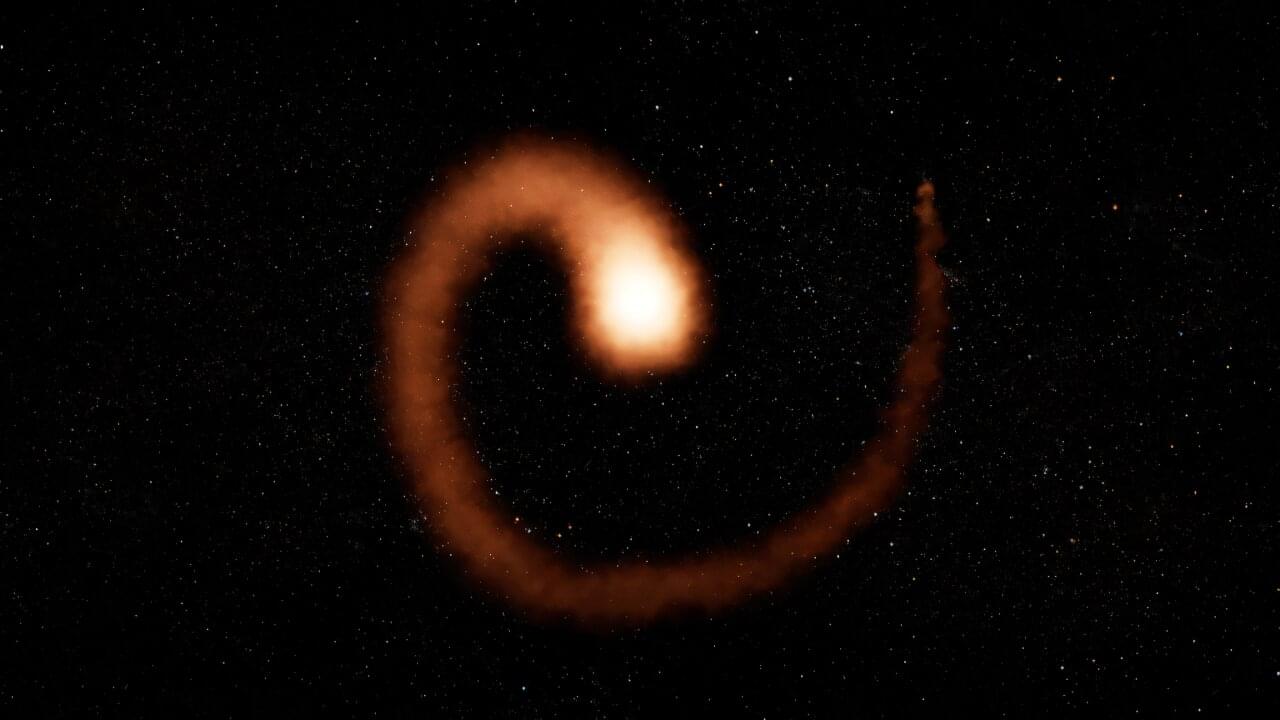A recent study reveals that the famous Wolf-Rayet 104 “pinwheel star” holds more mystery but is even less likely to be the potential “death star” it was once thought to be.
Research by W. M. Keck Observatory Instrument Scientist and astronomer Grant Hill finally confirms what has been suspected for years: WR 104 has at its heart a pair of massive stars orbiting each other with a period of about 8 months. The collision between their powerful winds gives rise to its rotating pinwheel of dust that glows in the infrared, and spins with the same period.
The pinwheel structure of WR 104 was discovered at Keck Observatory in 1999 and the remarkable images of it turning in the sky astonished astronomers. One of the two stars that were suspected to orbit each other—a Wolf-Rayet star—is a massive, evolved star that produces a powerful wind highly enriched with carbon. The second star—a less evolved but even more massive OB star—has a strong wind that is still mostly hydrogen.
